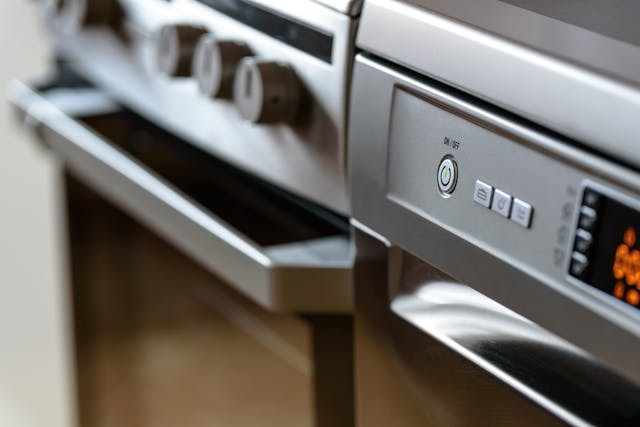
We know that, as a landlord, keeping your rental property in good condition is your top priority. After all, a well-maintained rental property is more attractive to potential tenants, minimizing vacancy periods.
Unfortunately, even regular maintenance can’t keep a property protected from normal wear and tear. Everyday living activities such as walking on floors, moving furniture, using appliances, and opening doors cause gradual deterioration.
This normal usage results in minor damages, such as scuffed floors, worn carpets, or faded paint.
In this guide, the experts at Vesta Property Management will go over everything you should know about normal wear and tear and how to prevent further property damage. Let’s dive in!
Understanding Normal Wear and Tear
“Normal wear and tear” is a term commonly associated with rental properties. But what exactly does it mean? Well, it refers to expected signs of deterioration that result from ordinary use over time. Examples of this include the following:
1. Faded or Chipped Paint
Over time, paint can start to fade away or unpeel, especially in areas exposed to sunlight or frequently touched, like walls near doorways. This, along with minor chips or scuffs are all typical signs of normal wear and tear.
2. Worn Carpets
Carpets tend to show signs of wear, especially if they’re in high-traffic areas such as hallways and living rooms. This may include flattened fibers, minor stains, or fraying around the edges. While these issues indicate normal use, larger stains or significant damage may require more attention.
.jpg)
3. Scuffed or Scratched Flooring
Hardwood, laminate, and tile floors can accumulate scuffs and light scratches from regular use. These marks often appear in entryways, kitchens, and other areas with heavy foot traffic. While these are normal, deep gouges or cracked tiles suggest more serious damage.
4. Loose or Worn Door Handles
Frequent use can cause door handles to become loose or slightly worn. This is a common sign of wear and tear, particularly in heavily used doors like those to bathrooms, bedrooms, and entrances.
5. Minor Cracks in Walls
Small cracks in walls, especially near doors and windows, can result from the natural settling of the building. These are usually superficial and not a cause for concern but should be monitored over time.
6. Faded or Stained Countertops
Countertops in kitchens and bathrooms may show signs of fading or minor stains from regular use. While minor blemishes are expected, deep stains or burns may indicate more significant damage caused by tenants.
7. Dull or Scratched Fixtures
Fixtures like faucets, light switches, and cabinet handles can become dull or scratched from everyday use. These signs of wear are typically cosmetic and do not impact their functionality.
8. Deteriorated Appliances
Appliances like refrigerators, ovens, and washing machines can show signs of wear over time, such as faded exteriors, minor dents, and functionality problems. While some wear is expected, frequent breakdowns or significant performance issues may indicate the need for repair or replacement.

By identifying the common signs of wear and tear, you’ll be able to address minor issues promptly. This will ensure that your properties remain in good condition and are still appealing to tenants.
What Doesn’t Constitute Normal Wear and Tear?
Wear and tear is a perfectly normal aspect of renting out a property. As a landlord, you must learn to distinguish between normal wear and tear and damage caused by negligence, misuse, or intentional actions.
This will be crucial for assessing the property's condition after a tenant moves out and determining whether you need to deduct from their deposit. Here are some damages that are typically not considered normal wear and tear:
- Large holes in walls
- Broken windows or doors
- Significant stains or burns on carpets
- Extensive water damage
- Broken or missing fixtures
- Severe appliance damage
- Unauthorized alterations, like painting walls or removing built-in fixtures
- Excessive dirt or filth
- Pet-related damage, such as scratches on doors and walls, or chewed-up baseboards.
- Clogged or damaged toilets.
- Cracked or loose tiles
- Damage drywalls
What to Do About Normal Wear and Tear?
If you encounter signs of normal wear and tear on your rental properties, it’s essential to address the issues promptly to maintain the property’s condition and value as a landlord.
1. Document the Damage
Before making any repairs, document the wear and tear with photos and detailed notes. This creates a record that can be used for future reference, especially when comparing the property’s condition between tenancies.
.jpg)
2. Prioritize Repairs
Assess the severity of the wear and tear and prioritize repairs accordingly. Promptly addressing issues like loose door handles, scuffed walls, or worn carpets can prevent further deterioration and ensure the property remains in good condition.
3. Schedule Necessary Maintenance
Once wear and tear have been identified, schedule the necessary maintenance or repairs. This might include repainting walls, replacing worn carpets, or fixing minor plumbing issues. Timely maintenance helps keep the property appealing and functional for current and future tenants.
4. Evaluate Potential Upgrades
If wear and tear are recurring issues on your rental, consider upgrading materials to more durable options. For example, replacing carpet with hardwood or tile, or using washable paint, can reduce the frequency of repairs and improve the property's longevity.
5. Reassess Lease Terms
If the signs of wear and tear are more extensive than expected, reassess your lease terms to include clearer guidelines on property care. You might also consider adjusting security deposits to cover potential repairs in the future.
Bottom Line
Understanding normal wear and tear is crucial for landlords to maintain the value of their properties and enhance tenant satisfaction.
By recognizing the signs of normal wear and tear, addressing minor issues early, and implementing preventive measures, you can reduce repair costs, avoid disputes, and ensure your property is always well-maintained.
If you have any more questions about normal wear and tear, contact Vesta Property Management! Our expert property managers will be happy to help you!